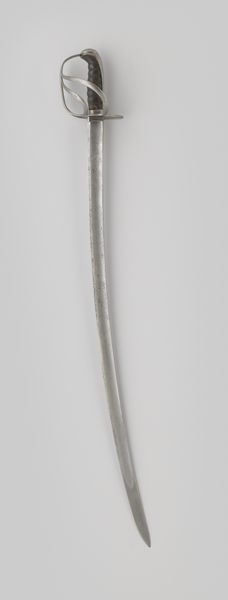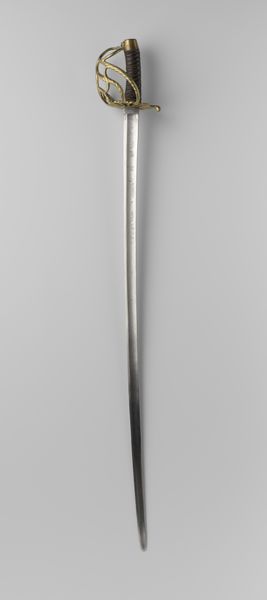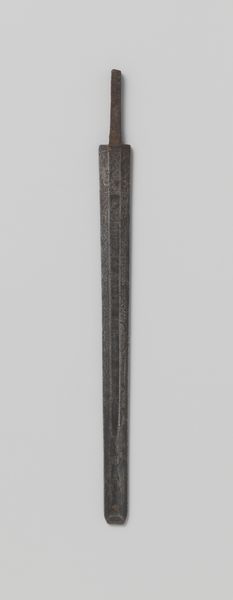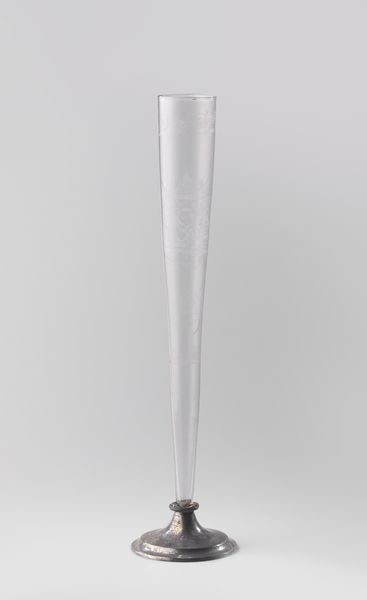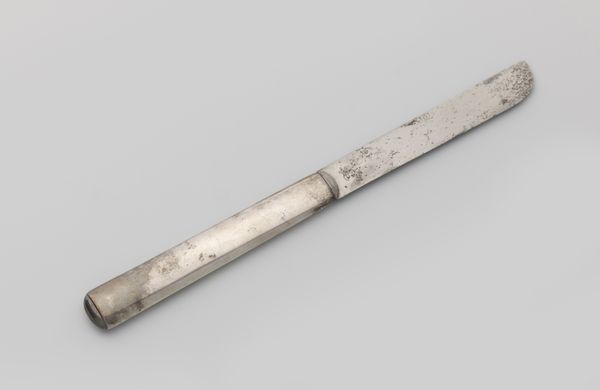
metal, sculpture
#
metal
#
form
#
sculpture
#
line
#
islamic-art
#
decorative-art
Dimensions: height 67 cm, width 6 cm
Copyright: Rijks Museum: Open Domain
Curator: That blade curves with such menacing elegance. I imagine it shimmering in the North African sun. Editor: Indeed. This is an Algerian saber, sometimes called a "nimcha," dating back to around 1650. It's part of the Rijksmuseum collection. The fact that it is presented here as an art piece is rather significant I think. Curator: It's undeniably a work of art, although of the martial variety. Beyond its sharp purpose, one sees an intriguing commentary on masculine identity and power through a colonial lens. How was this saber, undoubtedly carried by someone who would have likely been male, seen by Dutch colonial powers? Was it fetishized? Mimicked? Dehumanized along with those who wielded them? Editor: Well, sabers like these often circulated as trade items or spoils of conflict, so tracing their specific journeys is tough. Their presence in collections like the Rijksmuseum shows how material culture played into the Dutch Republic's understanding and representation of North Africa. These weapons weren't merely functional, they were potent symbols deployed within specific contexts. What are some things that strike you when looking at the decorative style? Curator: There’s a delicate line to the metal work, and even a formal complexity to its silhouette, which, let’s not forget, is intrinsically tied to Islamic artistic tradition. It reminds us that identities and craftsmanship flourish within and sometimes despite socio-political structures. The saber then, embodies more than warfare and conquest; it mirrors artistry, identity, and defiance. Editor: Exactly. Its creation, use, and eventual collection are all products of power dynamics and aesthetic exchange. Recognizing its significance necessitates deconstructing the narratives within which it has been displayed and preserved, wouldn't you agree? Curator: Absolutely. The act of examining something designed for conflict as a symbol of broader human narratives--of artistry, exchange, and yes, sometimes even resistance--is fundamentally the goal here. Editor: A potent reminder to look beyond immediate impressions.
Comments
No comments
Be the first to comment and join the conversation on the ultimate creative platform.

